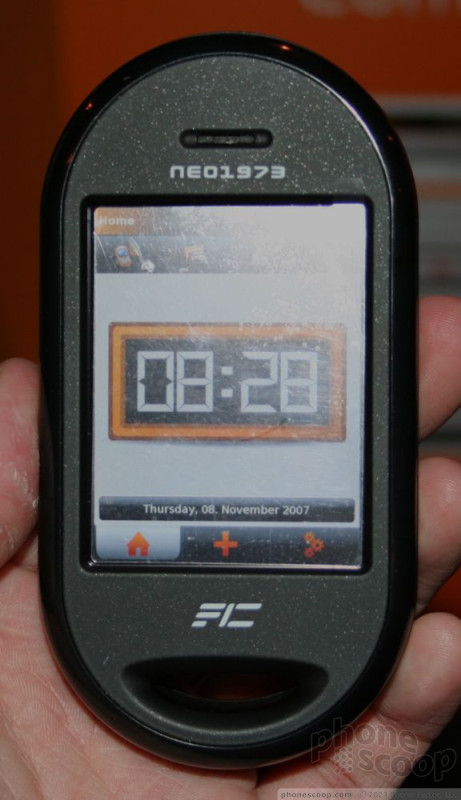CES 2008
We had a chance to spend a few moments with the OpenMoko Neo FreeRunner open-source Linux phone. This phone was clearly a work in progress.
Just a quick bit of background on this one. The Neo is an open source project. The reference hardware was released to developers last summer, who have created a basic mobile operating system. Now that the basic operating platform is in place, OpenMoko re-released the Neo in a version that can be modified for consumers. It hopes to offer a consumer version of the phone sometime later this year.
The hardware was solid, lending it an air of ruggedness. It is large, meaning it is not pocket friendly in its current state. It was thick. We're talking a veritable brick here. Despite its size, it was not overly heavy. The plastics were rounded and fairly smooth, but it was easy and comfortable to grip in your hand.
There are very few buttons on this device. There were two on the right side, and one on the left. Functions were not yet assigned to these buttons.
The front of the device is dominated by ample touch screen. The screen was bright and had a nice, sharp resolution. The Neo is controlled almost entirely by using the touch screen on the front.
The basic operating system was only working about two layers deep. The home screen features a nice big clock. Along the bottom is a row of buttons that take you to the phone's three main systems: the home screen, contacts, and settings. Activating the buttons on the screen was intuitive, but the Neo does not provide any sort of haptic feedback. The software was fairly responsive to button pushes, and loaded the selected screens in short order.
Once you get about this deep, however, the secondary layers of menus and functions were clearly not fully working yet. None of the functions I tried to activate in these main systems were operational.
Along the top of the of the phone are four different tabs that access the phone's major applications, such as the phone, calendar and messaging menus. Again, once you got down into each of these different menus, the OS became non operational. But the buttons were easy to interact with and the basic layout makes sense from a usability perspective.
This phone will see another 3 to 6 months of development time before it hits the mass market. We expect a lot of the unfinished touches to be all tidied up by then.
We were able to shoot a couple of minutes of video of the Neo FreeRunner. You can check it out here:













 Review: Motorola ROKR E8
Review: Motorola ROKR E8
 CTIA 2008
CTIA 2008
 Hands On with the Motorola edge (2022)
Hands On with the Motorola edge (2022)
 iPhone 14 Plus Offers a Big Screen For Less
iPhone 14 Plus Offers a Big Screen For Less
 Qualcomm vs. Bullitt: Satellite Connectivity Comparison and Hands On
Qualcomm vs. Bullitt: Satellite Connectivity Comparison and Hands On
 Nokia 3555
Nokia 3555
 LG Vu / CU920 / CU915
LG Vu / CU920 / CU915
 Motorola ROKR E8
Motorola ROKR E8

